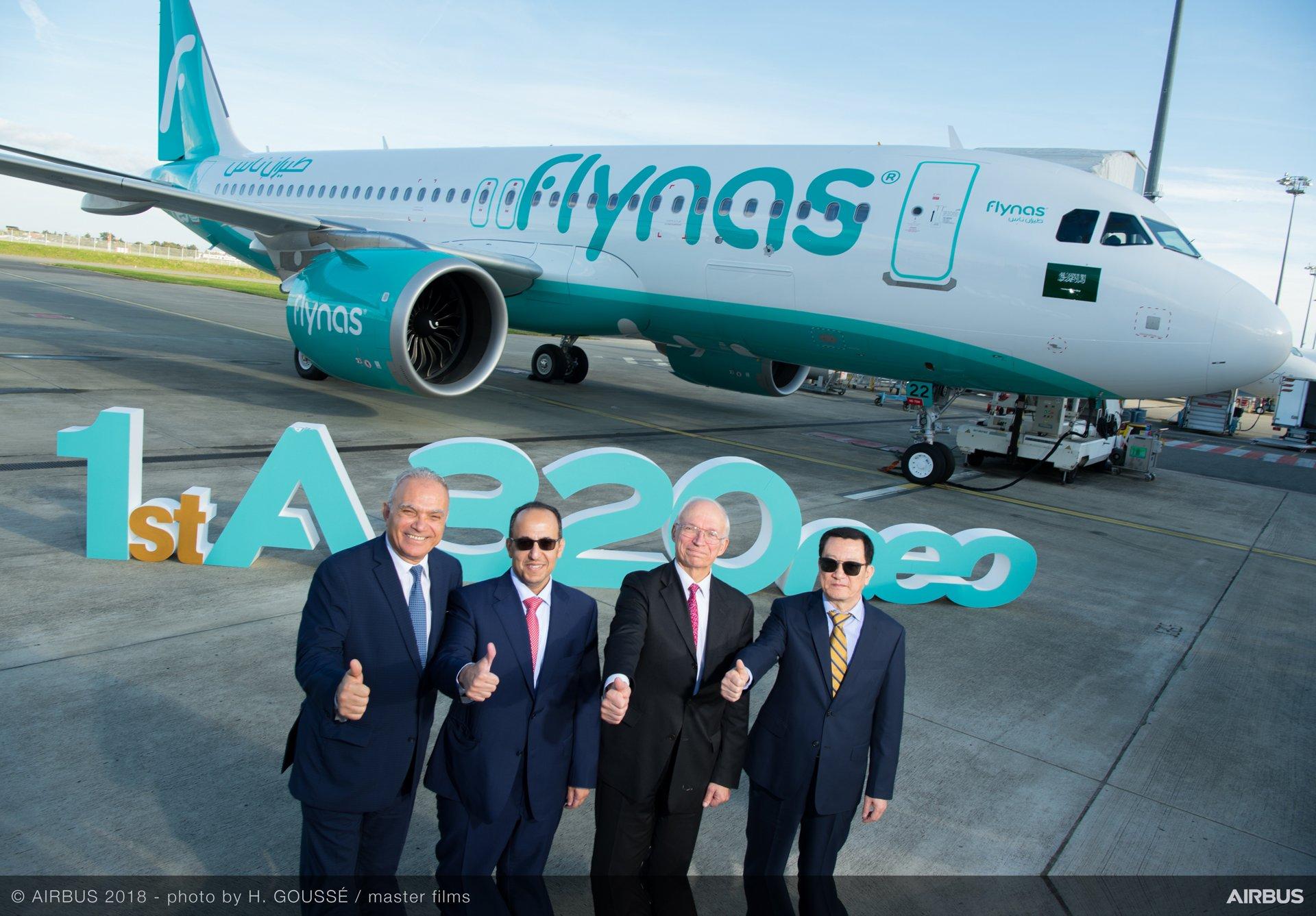Saudi Arabia’s market poised for further growth as competition intensifies

Flynas this week became the first operator in Saudi Arabia to acquire the Airbus A320neo aircraft. The Riyadh-based airline currently operates a fleet of 30 A320ceos, but is set to add 80 A320neos over the coming years. It hopes to have all the new narrow-body jets in service by the end of 2026.
The carrier placed the order in January 2017 when it signed an agreement for 60 A320neo aircraft and converted 20 A320ceos from a previous order. The A320neos, powered by CFM LEAP-1A engines, will be used on high-density domestic segments as well as thinner routes.
The fleet order forms part of Flynas’ ambitions to accelerate growth and expand its international network. The airline, which launched as Nas Air in 2007 and is partly owned by Prince al-Waleed bin Talal, carried a record 6.4 million passengers in 2017, up from 6.3 million during the previous 12 months.
However, growth has slowed in recent years from 14 percent in 2016 to less than 2 percent last year. During the first six months of 2018, the carrier said it handled in excess of 3 million passengers.
Intensifying competition in its home market has contributed to the slowdown. Until 2016, Flynas and government-owned Saudia were the only local operators serving the 27 million people living in Saudi Arabia. Since then, Nesma, SaudiGulf and Flyadeal have all launched operations.
SaudiGulf operated its first domestic service in October 2016 with flights between Dammam and Riyadh and has since expanded to offer international routes. The airline commenced double-daily flights from Riyadh to Dubai in March 2018 and began flights to Pakistan last month.
This week the carrier also signed an agreement to purchase ten A320neo family aircraft. It currently operates a fleet of six A320 aircraft from its hub in Dammam.
“The A320neo family represents a natural evolution of our current fleet of A320 aircraft and will contribute significantly to our network expansion in the region as well as internationally,” added Samer Majali, president and chief executive of SaudiGulf.
Nesma Airlines also started scheduled flights in October 2016 and now operates a fleet of two Airbus A320-200s and four ATR 72-600s on domestic routes.
However, the newest entrant, Flyadeal, has perhaps made the biggest splash. The budget airline, owned by flag carrier Saudia, launched in September 2017 and carried more than 1.5 million passengers in its first year of operation with a network of 56 daily flights between eight cities in Saudi Arabia. It is understood to be weighing up an order for 50 A320neo or 737 Max jets.
Aircraft on order by Saudi Arabian airlines (Source: AV Fleet Discovery as of 13 November 2018):
| Flynas | 75 Airbus A320-200N |
| 5 Airbus A320-251N | |
| Saudia | 5 Boeing 787-10 |
| 3 Boeing 787-9 |
The new entrants to the market have resulted in an overall capacity surge. According to data provided by OAG Schedules Analyser, Saudi Arabia’s domestic capacity has grown from 23.4 million available departure seats in 2015 to 34.6 million this year. International capacity has risen from 28.4 million to 32.5 million over the same time period.
OAG figures show that for w/c 11 November 2018, Saudia has a domestic capacity share of 67.3 percent, Flynas has 16.9 percent, Flyadeal has 10.3 percent, SaudiGulf has 3.4 percent and Nesma has 1.8 percent. During the same week two years ago, Saudia’s capacity share was 76.5 percent and Flynas’ was 22.4 percent.
The surge in activity comes amid the Kingdom’s efforts to place more focus on its tourism and travel industry and reduce its dependence on oil. Its Vision 2030 strategy seeks to grow arrival numbers from 18 million in 2016 to 30 million by 2030, building on the appeal for both leisure tourists and Hajj and Umrah pilgrims.
As part of this, the Saudi government has begun to adopt a more liberal approach to visa policies and invest in infrastructure. In December, for example, a new online visa process will be introduced for the inaugural Saudia Ad Diriyah E-Prix. Attendees of the motor racing event will be eligible for a 30-day visitor visa.
Meanwhile, the new King Abdulaziz International Airport in the Red Sea port city of Jeddah had a soft opening in May 2018 as it gears up to becoming fully operational by early 2019. The old Jeddah airport handled a record 34 million passengers in 2017, but the new one will have the capacity for 80 million passengers annually.
